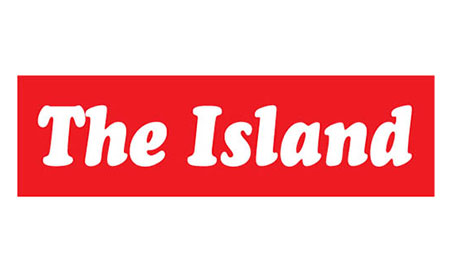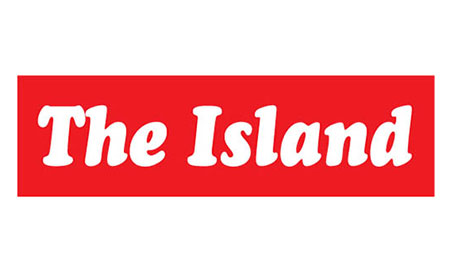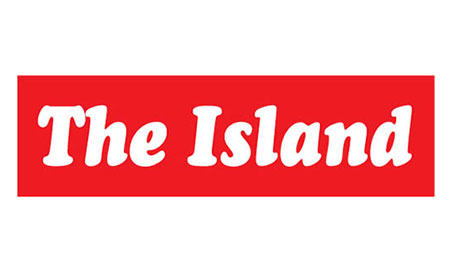Editorial
Chilling stats and inaction

Friday 19th February, 2021
Police Spokesman DIG Ajith Rohana has alerted the public to an alarming increase in killer road accidents recently. During the past seven days, as many as 23 people have died in road mishaps, he says. Prangs, near misses and the attendant chaos on roads have become the order of the day, again. This may be taken as an indication that the country has returned to normal earlier than expected. During the pandemic-related lockdowns and travel restrictions, there was a sharp drop in road fatalities, which began to increase gradually as the country limped back to normalcy.
Road accidents snuff out more lives than coronavirus does in this country. Deaths due to road mishaps average eight a day. Not even the war destroyed lives at this rate. The National Council for Road Safety has revealed that 2,641 fatal road accidents caused as many as 2,829 deaths in 2019, when 10,691 mishaps occurred. There were 776 pedestrians, 1,162 motorcyclists, 282 drivers, 405 passengers and 204 cyclists and 10 others among the victims. There is a war of sorts against the runaway virus, which must be stopped, but there has been no such national effort to prevent road accidents. Why?
What action have the police taken to minimise road accidents and fatalities. The practice of revealing chilling statistics, from time to time, will not help prevent such tragedies however necessary it may be to raise public awareness. Hiru TV yesterday highlighted the danger motorists and pedestrians are exposed to at Rilawala, Kahatuduwa on the Colombo-Horana road. More than ten accidents happen at this busy intersection a month, according to witnesses, but the police have not done anything to make the place safe for motorists and pedestrians. All it takes to prevent such mishaps is to install signal lights or deploy traffic policemen there. Neither the traffic police nor the Road Development Authority nor the Pradeshiya Sabha concerned nor any other state institution seems to care.
The traffic police are maintained with public funds to make roads safe. They have to prevent road mishaps and ease traffic congestion. Instead, they patiently wait on the roadside until traffic laws are violated so that they can fine errant motorists. At some intersections in the city, there are posses of policemen hiding behind wayside lampposts and trees to nab those who drive through a red light, endangering their lives as well as others’. The presence of a single policeman is sufficient to ensure the safety of road users at some junctions, provided it is made conspicuous so that it will have a deterrent effect on reckless motorists.
Many newly carpeted roads in suburban areas are without sidewalks, and vehicles move extremely fast on them, posing a danger to pedestrians. Such roads run through even bustling townships, and speeding trucks and buses knock down many pedestrians and motorcycles daily. What one gathers from the numerous accidents shown on television daily is that vehicles, especially buses, trucks and motorcycles move like bats out of hell with the police doing precious little to control them. Why can’t cameras be installed to nab speedsters?
If the high-performance speedsters, as it were, are identified with the help of cameras and awarded tickets or hauled up before courts regularly, there will be a significant decrease in accidents. This method works well on expressways, where, as cynics say, drivers’ speeding skills are recognised at exit points, where the police courteously present them with detailed spot fine statements; why it is not employed elsewhere is the question. The government will be able to recover the cost of installing cameras in next to no time as the country is full of motorists who try to break the sound barrier.
Today, we carry an article on road accidents, which reveals that last year, the Stockholm Declaration adopted by the Third Global Ministerial Conference on Road Safety focuses on speed management besides strengthening of law enforcement to prevent speeding––the leading cause of road fatalities––and mandating a maximus speed of 30 km/h, in places where road users and vehicles have to move in a planned manner. One may argue that in Colombo and its suburbs, vehicles cannot exceed the aforesaid speed limit except around midnight, but the lowering of speed limits will work in areas like busy townships through which arterial roads run.
A Presidential Task forces has been appointed to battle COVID-19. The need for such a national effort to tackle the scourge of road accidents as well cannot be overemphasised.
- News Advertiesment
See Kapruka’s top selling online shopping categories such as Toys, Grocery, Flowers, Birthday Cakes, Fruits, Chocolates, Clothing and Electronics. Also see Kapruka’s unique online services such as Money Remittence,News, Courier/Delivery, Food Delivery and over 700 top brands. Also get products from Amazon & Ebay via Kapruka Gloabal Shop into Sri Lanka.
Editorial
Gesture of solidarity

Thursday 25th February, 2021
Nothing could be more reassuring and uplifting in times of trouble than a true friend’s presence. Sri Lanka has only a few generous, altruistic friends, and Pakistan certainly is prominent among them. Pakistani Prime Minister Imran Khan’s visit, albeit brief, could not have come at a better time for Sri Lanka, a badger facing a pack of growling mastiffs in Geneva; what it needs most at this juncture is moral support.
Many are the nations that have proffered loads and loads of unsolicited advice to Sri Lanka on how to protect democracy and human rights. But none of them helped remove the scourge of terror, the gravest threat to democracy and humankind. Pakistan stood unwaveringly behind Sri Lanka during the latter’s war on terror and helped the latter in numerous ways. It was the multi-barrel rocket launchers Pakistan rushed here in the aftermath of the fall of Elephant Pass garrison, in 2000, that enabled the Army put the brakes on the ‘unceasing wave’ of the LTTE. Otherwise, the Tigers would have laid siege to Jaffna with ease, forcing the Army to withdraw its troops. (Some countries even offered ships for ferrying soldiers to Colombo!) Today, Sri Lanka is free from political assassinations, massacres, child conscription, etc., as LTTE terrorism has been neutralised. If it had given in to pressure from the Western bloc and spared the LTTE’s military muscle, thousands of lives would have been destroyed during the last 12 years or so.
There were calls, in some quarters, for PM Khan to take up the issue of ‘forced burials’ with Colombo. They were obviously aimed at creating a media feeding frenzy and thereby giving the anti-Sri Lankan campaign in Geneva a boost. Pakistan and Sri Lanka have their own way of sorting out problems; never do they resort to megaphone diplomacy. But, the fact remains that mandatory burials have hurt the Muslim community beyond measure mostly because those who die of COVID-19 are allowed to be buried in other countries including those notorious for their antipathy towards Muslims. Some prominent Sri Lankan medical experts are of the view that the burial of pandemic victims should be permitted, provided the health regulations in place to prevent the spread of the pandemic are strictly followed. Prime Minster Mahinda Rajapaksa, as a sensible leader, must have gone by expert opinion including that of the Sri Lanka Medical Association, when he said in Parliament recently that the burial of COVID-19 victims would become an option. Sadly, he was overruled.
It is significant that the Head of State of a prominent Islamic nation has been to Sri Lanka while the pro-LTTE groups are exerting a considerable pull on a section of the Muslims community who courageously stood up to LTTE terror and thwarted Prabhakaran’s efforts to extend his control over the Eastern Province. Some of the Muslims who became the target of a hate campaign following the Easter Sunday carnage have joined forces with the pro-LTTE political groups masquerading as crusaders for democracy, in the Eastern Province, which is of pivotal importance to the countries that seek to counter increasing Chinese presence here. This is something Sri Lanka and its Islamic allies such as Pakistan should take cognizance of.
Meanwhile, there are many areas where Sri Lanka and Pakistan can partner to realise their full potentials as developing nations. Besides trade, commerce and investment, they can concentrate more on agriculture, construction, science and technology, education, medicine, tourism, etc. PM Khan’s ‘Global Initiative on Debt Relief’ is something that Sri Lanka, as well as other nations in the Global South, should fully support.
There are some issues that Sri Lanka and Pakistan should address jointly. One of them is the narcotic trade, which has affected both countries badly. Drug cartels have established a supply route via Pakistan and Sri Lanka, which has become a narcotic transit point of sorts.
It is a pity that the Sri Lankan Parliament did not have the honour of being addressed by PM Khan, a brilliant orator and trusted friend.
Editorial
Should SL follow UK?

Wednesday 24th February, 2021
The Gash reports are in the news again. They are the diplomatic dispatches filed by Lt. Col. Anthony Gash, who was the Defence Attache of the British High Commission, Colombo, on the final stages of Sri Lanka’s war on terror. The UK, which leads the Sri Lanka Core Group in Geneva, has suppressed the Gash reports, whose revelations run counter to the claims, on which the war crimes resolution against Sri Lanka is based.
Surprisingly, Sri Lanka has not done enough to bring the Gash reports to the notice of the UNHRC. One should not be so naïve as to believe that facts will make either the so-called Core Group or UNHRC chief Michelle Bachelet change their minds. Their agenda is determined by the US, which uses human rights as a bludgeon to beat the nations that refuse to do its bidding. But placing the Gash reports before the UNHRC will help unmask the Core Group members and the US.
The UK is not alone in suppressing facts. The US, too, has chosen to ignore the facts that Lt. Col. Lawrence Smith, who was its Defence Attache in Colombo, during the final phases of the Vanni war, placed before an audience at an international defence seminar in Colombo in 2011; he disputed the claim that the Sri Lankan military had committed war crimes. He would not have said so without evidence to support his claim.
Old habits die hard. The UK and the US have a history of falsifying reports to suit their geo-strategic interests. They produced fake intelligence dossiers to justify the invasion of Iraq although the British intelligence had found no evidence of weapons of mass destruction in that country. They have adopted the same method in their war crimes campaign against Sri Lanka. Gash has said not more than 7,000 persons, including LTTE combatants, died in the war zone between 01 January and 18 May 2009. This number is in sharp contrast to the claim by the then UN Secretary General Ban Ki-moon’s Panel of Experts that more than 40,000 people perished during the final phase of the war. None of the UN experts were here during the war, unlike Gash and Lawrence, but the UK and the US have chosen to ignore facts their military experts have furnished. Why should the UK and the US have defence attaches at all in their foreign missions if they do not take their military experts’ views seriously?
What Lord Naseby managed to secure in the UK was a redacted version of the Gash reports. The UK has got redacting reports related to wars down to a fine art. In 2016, it released the Chilcot report on the Iraqi war. What observers have found interesting about that inquiry is it took longer to conclude than the war. What was released after a protracted delay was a heavily redacted version of the report, but it contains enough evidence to prove that the then British Prime Minister Tony Blair, together with US President at that time George W. Bush waged an illegal war and, therefore, were responsible for war crimes.
Having taken upon itself the burden of protecting human rights and ensuring that crimes do not go unpunished in the developing world, the UK should set an example. Before levelling war crimes allegations against others and calling for action thereon, shouldn’t it bring Blair to justice for invading Iraq and causing deaths of millions of civilians, including more than 500,000 children, in an illegal war for oil?
Anything Westminster goes here. It is the considered opinion of the defenders of democracy that Sri Lanka should emulate the UK in protecting human rights. What if Sri Lanka takes a leaf out of the UK’s book in handling alleged war crimes? In November 2020, the British Parliament passed a bill to prevent ‘vexatious’ prosecutions of military personnel and veterans over war crimes allegations. This law seeks to grant the British military personnel, who have committed war crimes, an amnesty to all intents and purposes. The International Criminal Court (ICC) has ascertained evidence of a pattern of war crimes perpetrated by British soldiers against Iraqi detainees, some of whom were even raped and beaten to death. Curiously, the ICC said in December 2020, it would not take action against the perpetrators! Too big to be caught?
Editorial
The rape of forests: Govt. in the dock

Tuesday 23rd February, 2021
The government has apparently achieved what it set out to when it issued a gazette removing the peripheral forests from the purview of the Forest Department and placed them under the Divisional and District Secretariats, purportedly to promote traditional agriculture. Its supporters are encroaching on thousands of acres of forest land with absolute impunity. Nobody takes gazettes seriously, and the government is also not keen to deal with noncompliance; the declarations of maximum retail prices, and minimum purchasing prices are a case in point. They are flouted blatantly. But the gazette pertaining to the peripheral forests took effect immediately! Such is the high-octane performance on the part of the government when it wants to help its supporters.
We have argued, in this column, previously that the government entrusted the District and Divisional secretariats with the task of looking after parts of forests because administrators are scared of ruling party politicians and do the latter’s bidding. We reported, the other day, that a Divisional Secretary had accompanied a group of government supporters who grabbed land in the Somawathiya National Park. The public service is full of such servile officers, and what is in store for the country’s forests is not difficult to imagine.
President Gotabaya Rajapaksa, speaking at a Gama Samaga Pilisandarak event, last Saturday, faulted the Forest Department, the Wildlife Department, the environmental authorities and others for being involved in a tug of war, which, he said, had rendered the public confused and helpless. True, these institutions work in silos, and not all their personnel are honest and conscientious, but the real problem is not their rivalries; it is that public administrators are helping the ruling party backers grab forest land, and the government is doing nothing about it. If the government is really desirous of ensuring coordination among the state outfits responsible for protecting the environment, it should bring all of them under one umbrella, vest them with more powers and give teeth to the existing laws.
There are some sand deposits inside the Somawathiya sanctuary, according to environmentalists, and what prevents government politicians and their associates from exploiting them is the absence of a road. This is why some ruling party worthies are trying to pressure the Wildlife Department to permit cattle grazing inside the national park. When cattle and cowherds enter the forest, footpaths appear with the passage of time, and these tracks can be used by the politically-backed racketeers to access the sand deposits.
What is reported from the Somawathiya National Park is a textbook case of irony; perhaps, it also represents, in microcosm, the fate that befell the country after the successful conclusion of its war on terror. When the LTTE was around, nobody dared enter the national park for fear of terrorist attacks, and the place was safe, thanks to the absence of human activity. The present-day rulers liberated the area from the clutches of the LTTE more than a decade ago, but, unfortunately, the liberators are now supporting those who destroy the sanctuary.
The President has called for action against those who encroach on forests on the pretext of engaging in traditional agriculture. Defence Secretary General (retd) Kamal Gunaratne has said that he had found that some Divisional Secretaries were issuing licences to clear forest lands and the practice had to be stopped. We have published pictures of some land grabbers responsible for the rape of the Somawathiya sanctuary. They can be identified and hauled up before courts.
Now that both the President and the Defence Secretary are convinced that some errant state officials and encroachers responsible for destroying forests have to be stopped, the question is what prevents them from going the whole hog to have the racketeers brought to justice forthwith. For those who pride themselves on having killed Prabhakaran, stopping the destroyers of forests should be child’s play.









